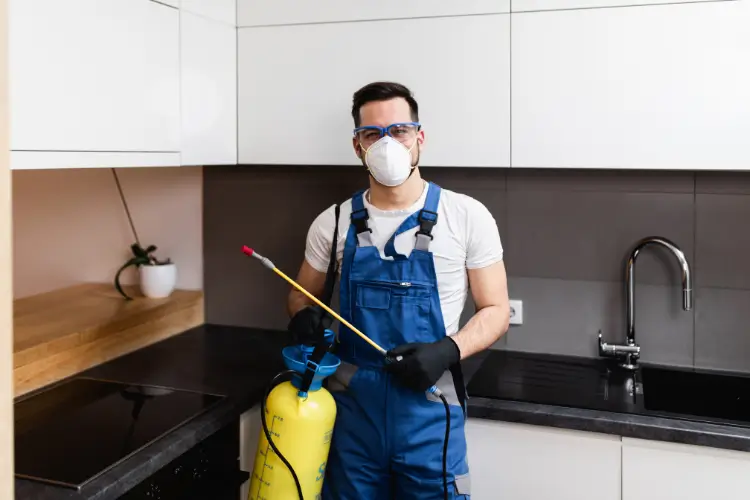Many homeowners find it challenging to keep their homes free from pests. From tiny ants to destructive rodents, unwanted critters can invade their living space and cause significant damage if left unchecked. This article will explore ten crucial strategies to help you maintain a pest-free environment and protect your home from these unwelcome visitors.
Understanding Common Household Pests
Before diving into prevention strategies, it’s important to familiarize yourself with the most common household pests. These typically include:
- Ants
- Cockroaches
- Mice and rats
- Spiders
- Termites
- Bed bugs
- Flies
- Mosquitoes
Each of these pests presents unique challenges and requires specific effective control and prevention approaches.
Strategy 1: Seal Entry Points
Sealing off potential entry points is one of the most effective ways to prevent pests from entering your home. This includes:
- Cracks in the foundation
- Gaps around windows and doors
- Holes in walls or siding
- Openings around pipes and utility lines
Use caulk, weather stripping, or steel wool to close these gaps and make it harder for pests to find their way inside.
Strategy 2: Maintain a Clean Environment
Pests are attracted to food sources and clutter. Keep your home clean by:
- Wiping down counters and surfaces regularly
- Vacuuming and sweeping floors frequently
- Storing food in airtight containers
- Cleaning up spills immediately
- Reducing clutter that can provide hiding spots for pests
A clean home is less inviting to pests and makes it easier to spot signs of an infestation early.
Strategy 3: Proper Waste Management
Garbage and organic waste can attract pests if not appropriately handled. To minimize this risk:
- Use trash cans with tight-fitting lids
- Take out the garbage regularly
- Clean trash cans periodically to remove residue
- Compost away from the house
- Keep outdoor garbage areas clean and well-maintained
Strategy 4: Control Moisture
Many pests are attracted to damp environments. To reduce moisture in and around your home:
- Fix leaky pipes and faucets promptly
- Use dehumidifiers in basements and other damp areas
- Ensure proper ventilation in bathrooms and kitchens
- Address any standing water issues in your yard
Strategy 5: Maintain Your Yard
The area immediately surrounding your home can significantly impact pest activity. To create a less hospitable environment for pests:
- Keep grass trimmed short
- Remove leaf litter and debris
- Store firewood away from the house
- Trim trees and shrubs away from the structure
- Use mulch sparingly near the foundation
Strategy 6: Use Natural Deterrents
Many natural substances can help repel pests without the use of harsh chemicals. Some effective options include:
- Peppermint oil for mice
- Citrus peels for ants
- Lavender for moths
- Diatomaceous earth for various crawling insects
While these natural deterrents can be helpful, they may not be sufficient for severe infestations.
Strategy 7: Implement Proper Food Storage
Proper food storage is crucial in preventing pest infestations. Follow these guidelines:
- Store dry goods in airtight containers
- Keep fruits and vegetables in the refrigerator when possible
- Clean up crumbs and spills promptly
- Don’t leave pet food out overnight
- Regularly clean pantry areas and check for signs of pests
Strategy 8: Use Screens and Barriers
Physical barriers can be very effective in keeping pests out. Consider:
- Installing screens on windows and doors
- Using door sweeps to block gaps under doors
- Placing mesh covers over vents and chimneys
- Using bed bug-proof mattress and box spring encasements
Strategy 9: Regular Inspections
Conducting regular inspections of your home can help you catch pest problems early. Look for:
- Droppings or urine stains
- Gnaw marks on wood or wires
- Mud tubes (signs of termites)
- Shed insect skins or wings
- Nests or hives
Early detection can make pest control efforts much more effective and less costly.
Strategy 10: Professional Pest Control Services
While DIY methods can be effective for minor pest issues, some situations call for professional help. If you’re dealing with a severe infestation or persistent pest problems, consider enlisting the help of a professional pest control service. For example, if you’re in southern Utah, you might search for pest control St George Utah to find local experts who can provide targeted solutions for your specific pest issues.
Professional pest control services offer:
- Comprehensive inspections
- Tailored treatment plans
- Access to more potent pest control products
- Ongoing prevention strategies
Implementing Your Pest Prevention Plan
Creating an effective pest prevention plan involves combining multiple strategies and staying vigilant. Here’s a simple checklist to help you get started:
- Conduct a thorough inspection of your home
- Seal all potential entry points
- Implement a regular cleaning schedule
- Improve waste management practices
- Address any moisture issues
- Maintain your yard and outdoor areas
- Try natural deterrents for minor pest problems
- Upgrade food storage methods
- Install screens and physical barriers
- Schedule regular professional inspections and treatments if needed
By following these strategies and remaining proactive, you can significantly reduce the risk of pest infestations in your home. Remember, consistency is key when it comes to pest prevention. Regular maintenance and quick action at the first sign of pests will help keep your home comfortable and pest-free year-round.




